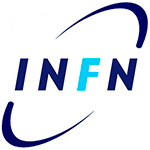Dr. Costantino Agnesi
Novel decoding techniques for time-bin encoded Quantum Communication
The temporal photonic degree of freedom is vastly exploited for quantum communications, both in prepare-and-measure (P&M) or entanglement-based protocols. However, decoding the quantum information encoded in time-bin (TB) can be a cumbersome task. In the case of TB entanglement a major issue is related to the discovery of the Post-selection loophole (PSL), a local hidden-variable models which explain the violation due to the post-selection of detection events, thus requiring extra assumptions to trust the Bell test result and rendering it vulnerable to quantum hacking attacks. Instead for P&M protocols, the need of interferometric measurements requires the development complex phase stabilization strategies, which increase the overall complexity and cost of the quantum communication system. In this presentation we discuss novel experimental techniques for time-bin decoding. Regarding the TB entanglement and the PSL two techniques, pioneered by our research group are presented. Firstly, PSL can be removed through the use of fast and stable optical switches to route the photons in the measurement interferometers to avoid the need for post-selection [Vedovato et al., Phys. Rev. Lett. 121, 190401 (2018)]. PSL can also be closed by exploiting a topologically different interferometric arrangement called the hug interferometer. This scheme, first developed for energy-time entanglement, can be extended to the TB case and allows a reduction in the frequency stability requirements of the pump laser and benefits from having specific photon generation times instead of a uniform distribution [Santagiustina et al., Optica 11, 498-511 (2024)]. Both of these methods certify genuine TB entanglement generation, i.e., allowing the violation of a Bell's inequality free of the Post-Selection Loophole. In this presentation we also present the experimental results that validate these methods. In particular, we implement the optical switches using standard off-the-shelf fiber components and the extinction ratio was observed to be over 99% (27 dB) [Vijayadharan et al., Proc. SPIE, 1291119 (2024)]. Instead, we implement the hug interferometer in a Silicon Nitride chip. For both methods, experiments were performed obtaining Bell-violations and demonstrating the validity of our techniques. Instead, regarding P&M protocols, we present a novel fully passive receiver for time-bin encoded Reference- Frame-Independent (RFI) QKD [Giacomin et al., arXiv:2408.17304 (2024)] . RFI-QKD aims to simplify QKD implementations by allowing to reduce the requirements of alignment on a shared reference frame. Conversion of time-bin to polarization is employed to perform the required quantum measurement in a fully passive manner. Furthermore, to overcome experimental errors, we retrieved a complete description of our measurement apparatus by employing a recently introduced Quantum Detector Self-Characterization technique, without performing tomographic studies on the detection stage. In fact, the security analysis carried out in this work uses experimentally retrieved Positive Operator Valued Measurements, which consider our receiver defects, substituting the ideal expected operators and thus increasing the overall level of secrecy. Lastly, we conducted a proof-of-principle experiment that validated the feasibility of our method and its applicability to QKD applications.





